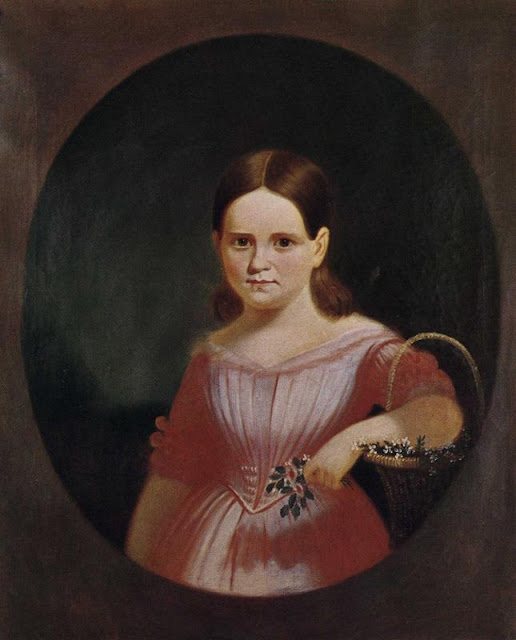George Caleb Bingham
(1811-1879)
George Bingham, though famous as a Missouri artist, was actually born in the state of Virginia on March 20, 1811, on a large farm encompassing eleven hundred and eighty acres, which also included the famous Grand Caverns, then known as Weir’s Cave. The estate belonged to his father, Henry Vest Bingham, and his mother, Mary Bingham, nee Amend. What little is known of them indicates that they were fairly well-to-do and both well-educated. George was the second of seven children.
When George was eight, his family moved to Franklin, Missouri, after his father lost money in a bad investment and decided to try his fortune in the West. However, George’s artistic streak became evident well before that time, at the very early age of four, when he attempted to emulate a rough sketch his father had drawn on a piece of slate. He was soon able to accurately replicate any such engravings. Though he lacked access to actual painting supplies during this period, he proved to be quite resourceful in his ability to improvise, using everything from axle grease to, allegedly, his own blood as substitutes.
In Franklin, the family set up a tobacco factory which became a lucrative business that helped them reclaim a certain amount of their former prosperity. At the same time, they invested in a large farm of over a hundred and fifty acres, and by 1821 they owned a tavern in the public square of Franklin.
Unfortunately, in 1823, George’s father died, leaving behind his wife and children, the eldest of whom, Henry, was fourteen. It is unclear whether the tobacco factory and tavern shut down outright or whether Bingham’s family was forced to sell their share in them, but either way the widow and her children ended up with nothing but the farm in their possession and had to work hard for their living. Mary Bingham’s high level of education came in useful, and she was able to tutor not only her own children but eventually opened a private school for young women. During this time, George helped his elder brother tend to the farm. When the weather didn’t allow for work in the fields, they took whatever other jobs they could find. Likely due to experience acquired in the tobacco factory, George often found work rolling cigars.
When he was sixteen, he was offered an apprenticeship to a cabinet-maker in the neighboring town of Boonville and his mother was quick to send him away, deeming the job less taxing than the daily farm chores. Bingham turned out to be very adept at woodcarving and quickly outshone his fellow apprentices. However, although the art came easy and the profession allowed him to earn substantial money with which to support his family, his heart was set on painting, which he dabbled in at every opportunity. At this time, Bingham also began studying law, which he hoped to someday turn into a profitable career, and theology.
Thus, when his apprenticeship was finally concluded, he was uncertain about which path to choose. It was at this point that he met a traveling artist by the name of Chester Harding, who, upon studying Bingham’s amateur works, persuaded him to pursue an artistic career and gave him some of his first lessons in professional painting.
























































.jpg)


ليست هناك تعليقات:
إرسال تعليق